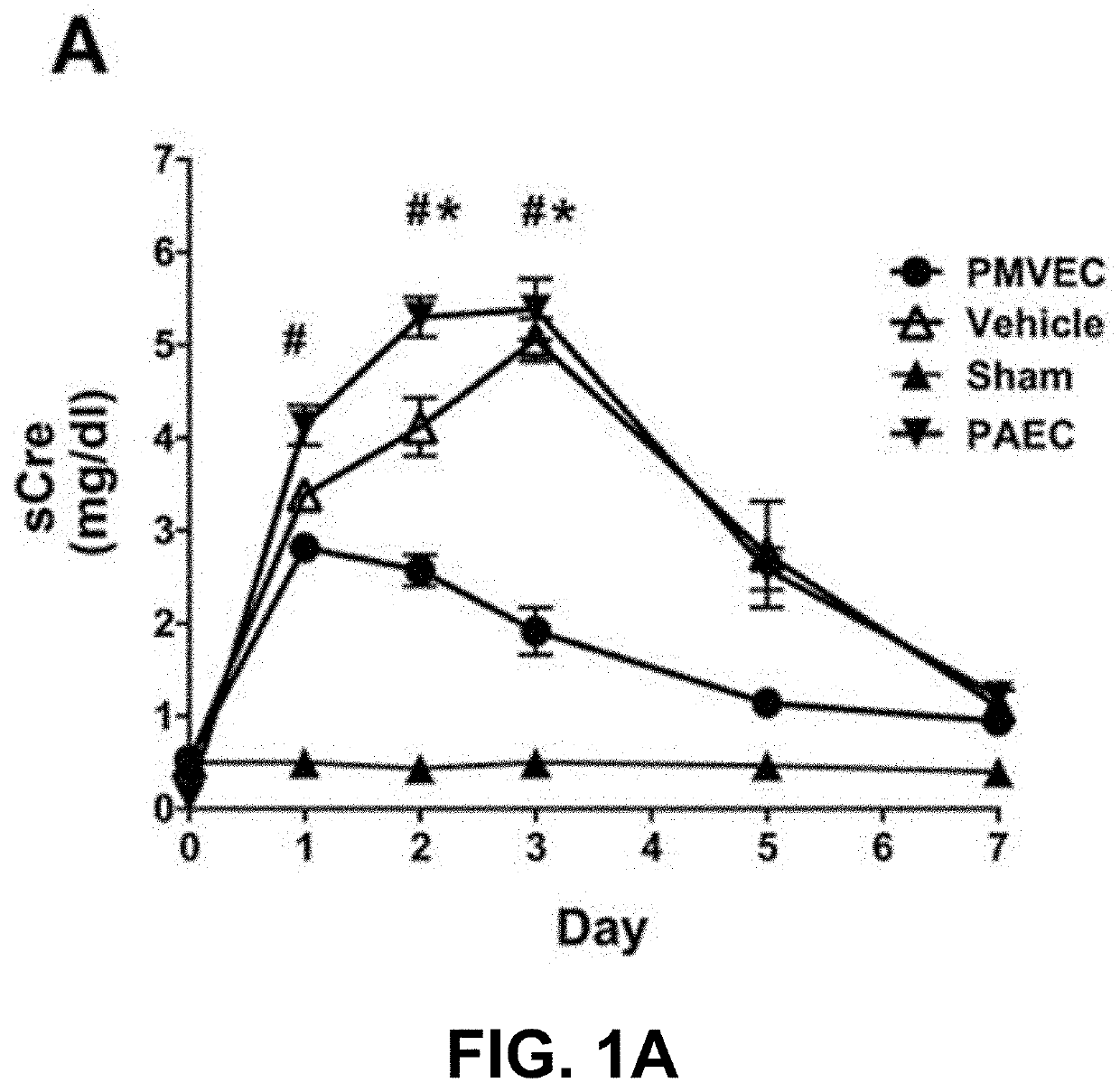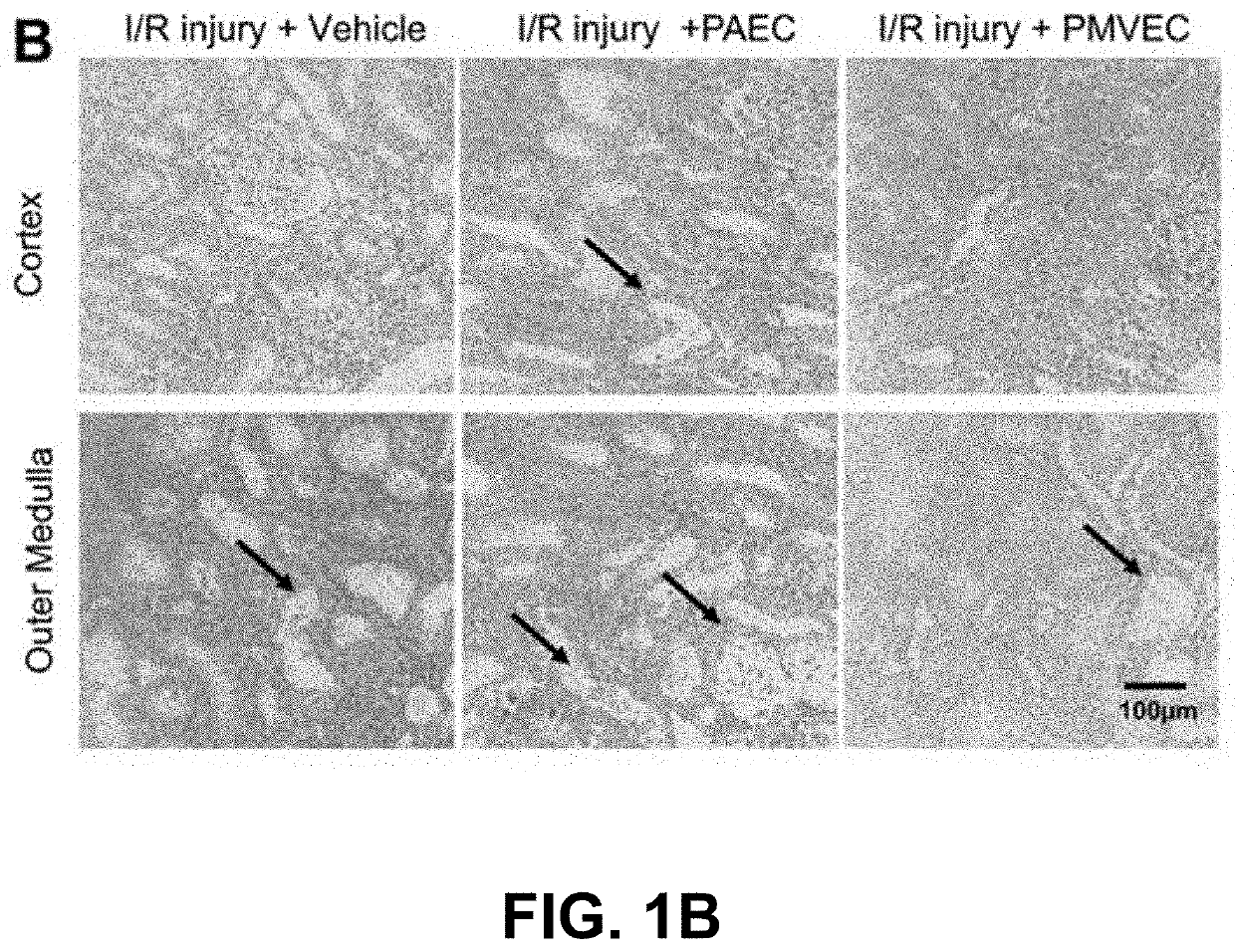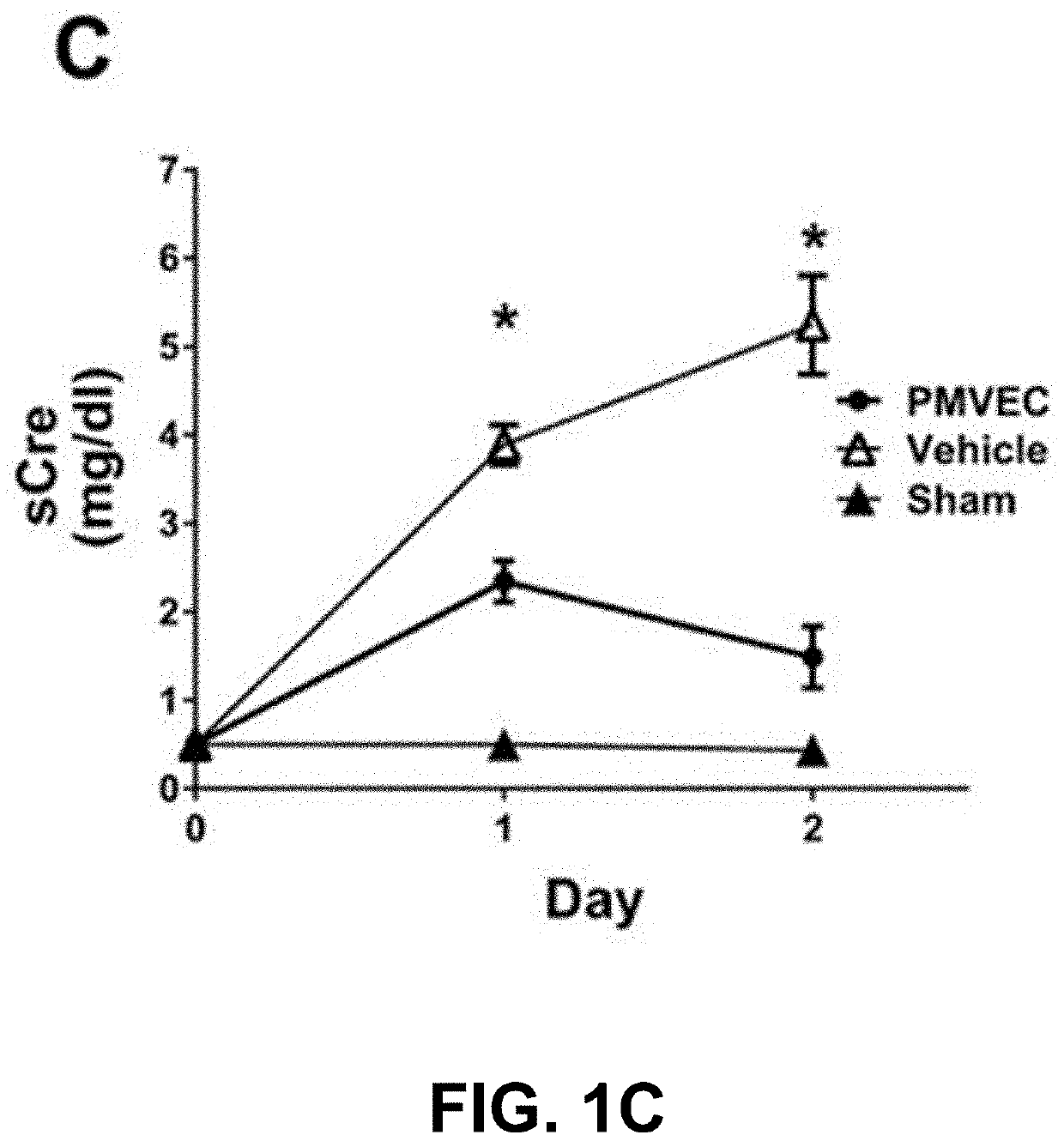Compositions and methods for the treatment or prophylaxis of a perfusion disorder
a perfusion disorder and cell therapy technology, applied in the field of cell therapy for the treatment of perfusion disorders, can solve the problems of reducing blood flow in tissues and organs, damage to the vasculature, and affecting vascular function, so as to promote neovascularization, enhance blood flow, and restore endothelial cell function
- Summary
- Abstract
- Description
- Claims
- Application Information
AI Technical Summary
Benefits of technology
Problems solved by technology
Method used
Image
Examples
example 1
nd Materials
Animals
[0210]Male Sprague-Dawley rats (initial weight ˜250 g) were utilized in all studies. Rats were given free access to standard rat chow and water throughout our studies. Experiments were conducted in accordance with National Institutes of Health guidelines and were approved by the Indiana University School of Medicine Institutional Animal Care and Use Committee.
Cells
[0211]Rat pulmonary microvascular endothelial cells (PMVEC) and rat pulmonary artery cells (PAEC) were isolated and expanded as described previously (Alvarez et al., Am J Physiol Lung Cell Mol Physiol 294: L419-L430, 2007). These primary cultures were derived from Sprague Dawley rats and utilized between passages 5 and 7. The endothelial nature of PMVEC and PAEC was previously characterized by Alvarez (Alvarez et al., 2007) and cells were validated according to their expression of CD31, KDR, and vWF, but were negative for CD45 and CD133. PMVEC have a significantly faster proliferation rate and a greater ...
example 2
Protect Against Renal Ischemia-Reperfusion (I / R) Injury and Accelerate Functional and Structural Recovery
[0225]The potential that ECFCs may alter the course of renal dysfunction and / or repopulate the renal microvasculature as a function of proliferative potential was addressed by comparing the effect of administered rat PMVEC, which have a high percentage of HPP-ECFCs, or rat PAECs, which have a low percentage of HPP-ECFCs (Alvarez et al., Am J Physiol Lung Cell Mol Physiol 294: L419-L430, 2007). Renal injury measured by increased serum creatinine was most prominent at 2 days of reperfusion. Relative to vehicle-treated control rats, PMVEC-treated rats had a lower peak creatinine level and a faster recovery of serum creatinine levels (FIG. 1A). In contrast, PAEC administration did not alter the course of renal injury relative to vehicle-treated rats. Despite evidence of recovery in all groups, the level of histological damage remained severe in post-ischemic, vehicle-treated animals ...
example 3
Preserve Medullary Blood Flow in the Early Post-Ischemic Period
[0226]To investigate the potential mechanism of PMVEC-mediated protection, the influence of these cells on hemodynamic function in the early post-ischemic period was investigated by measuring total RBF and outer MBF following reperfusion. Total RBF values rapidly recovered during the reperfusion phase and were similar to baseline values within 30-40 min. At 2 h of reperfusion, total RBF was ˜90-95% of baseline in both vehicle-treated and PMVEC-treated animals (not significant; FIG. 2A). In contrast, MBF gradually declined over the course of 2 h following reperfusion in vehicle-treated rats. However, PMVEC-treated rats had significantly preserved MBF relative to vehicle-treated rats (FIG. 2B).
PUM
| Property | Measurement | Unit |
|---|---|---|
| concentration | aaaaa | aaaaa |
| concentration | aaaaa | aaaaa |
| concentration | aaaaa | aaaaa |
Abstract
Description
Claims
Application Information
 Login to View More
Login to View More - R&D
- Intellectual Property
- Life Sciences
- Materials
- Tech Scout
- Unparalleled Data Quality
- Higher Quality Content
- 60% Fewer Hallucinations
Browse by: Latest US Patents, China's latest patents, Technical Efficacy Thesaurus, Application Domain, Technology Topic, Popular Technical Reports.
© 2025 PatSnap. All rights reserved.Legal|Privacy policy|Modern Slavery Act Transparency Statement|Sitemap|About US| Contact US: help@patsnap.com



